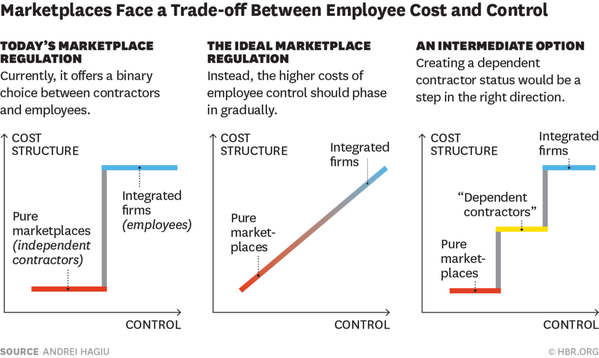Are we headed into a world of continuous partial employment? And is it a good thing? Tim O’Reilly says yes, and yes.
Do Uber and Upwork make work more precarious?
In essence, the model of always-on partial employment is already in place in the US. In retailers and chains such as Walmart, McDonald’s, but also the GAP and Starbucks. Question is: does the apparition of on-demand work platforms such as Uber, TaskRabbit or, indeed, Upwork, make it better, or worse?
They introduce free market rules to certain types of jobs
You fire up the app when you want to work. You stop using it when you’ve reached your income goal. That’s the premise. Upwork is the model for – mostly – creative jobs, whilst Uber is its pendant for an activity everyone with a car can do: in fine, they help offer and demand to meet. When there is more offer (workers) than demand (jobs/tasks), prices go down. And vice-versa: the surge system is a prime example.
Technology empowering managers VS technology empowering workers
Tim’s most powerful highlight is probably the opposition of these two scenarii:
Our workers are employees. We used to hire them for eight hour shifts. But we are now much smarter, and are able to lower our labor costs by keeping a large pool of part time workers, predicting peak demand in 15 minute increments, and scheduling workers in short shifts. Because demand fluctuates, we keep workers on call, and only pay them if they are actually needed. What’s more, our smart scheduling software makes it possible to make sure that no worker gets more than 29 hours, to avoid triggering the need for expensive full time benefits.
VS
Our workers are independent contractors. We provide them tools to understand when and where there is demand for their services, and when there aren’t enough of them to meet demand, we pay them more (and charge customers more) until supply and demand are in balance. They can work as much or as little as they want until they meet their income goals. They are competing with other workers, but we do as much as possible to maximize the size of the market for their services.
The full article is well worth a read:
